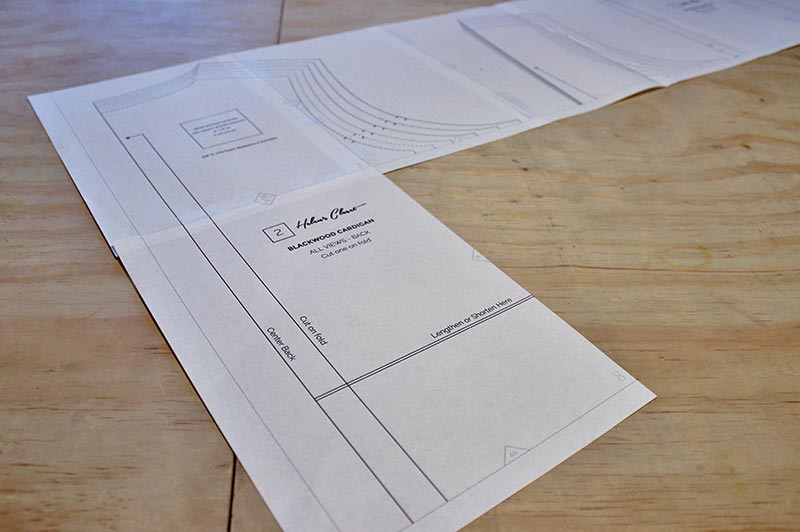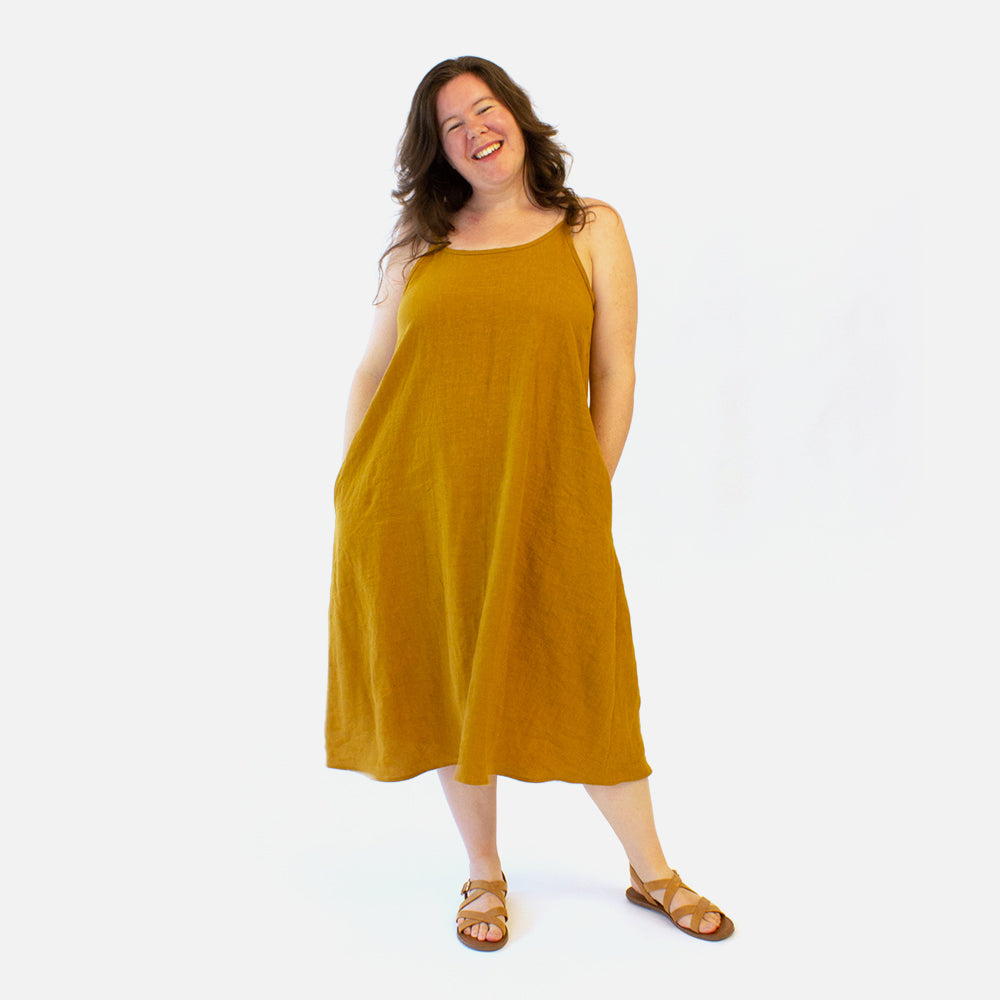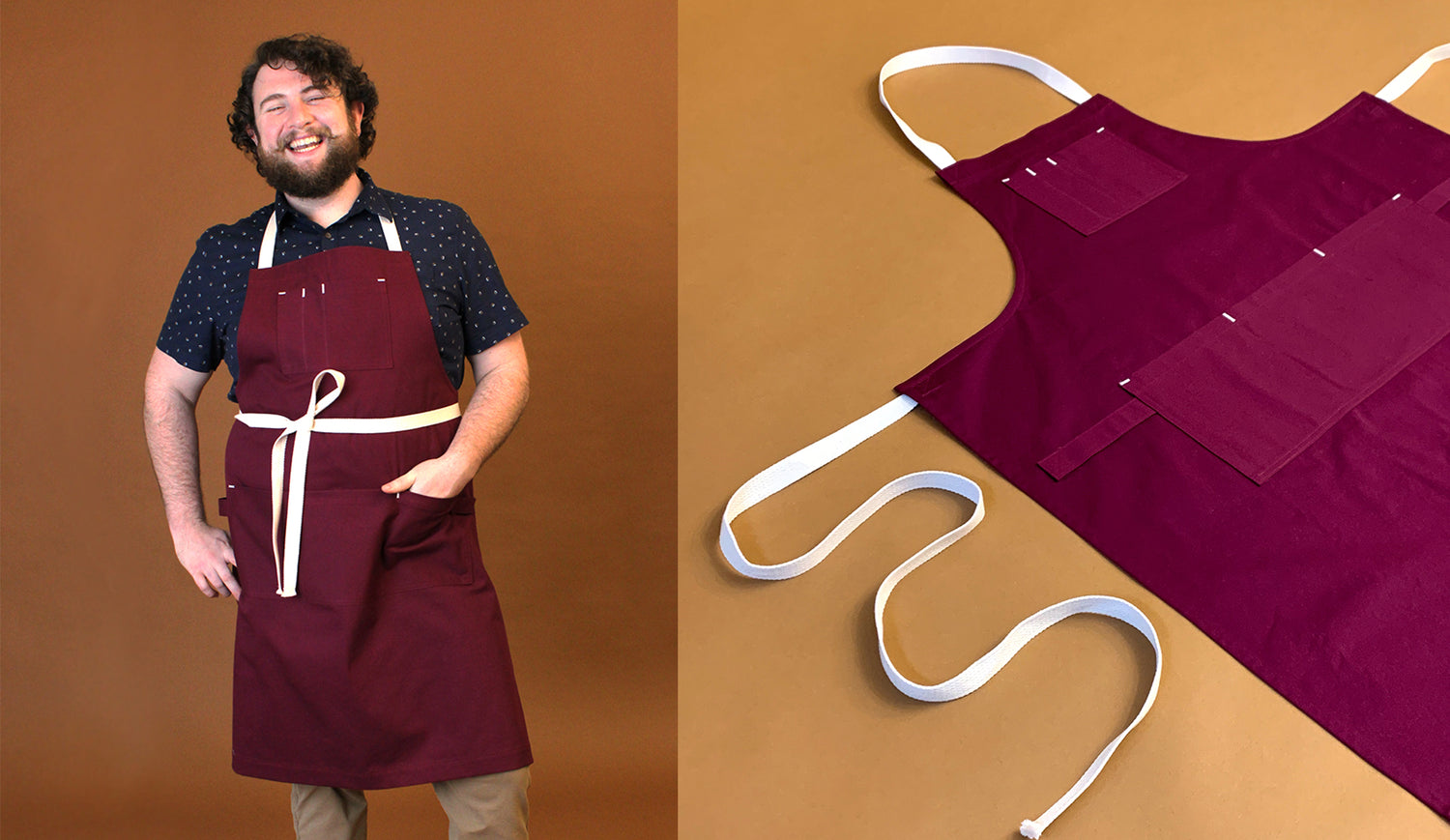 I am a big fan of PDF patterns. Not just because I offer them, but because I prefer them as a home sewist myself. I almost always go for the PDF over the printed pattern. I know I'm not alone here, but I also know some people are on the fence or just hate taping (I get it!). Maybe you haven't tried one yet, or you’re wondering how PDF patterns even work! There are lots of benefits to PDF patterns, and once you get the hang of assembling them, you can have your next sewing project printed, cut, taped and ready to go in no time! The benefits of PDF patterns
I am a big fan of PDF patterns. Not just because I offer them, but because I prefer them as a home sewist myself. I almost always go for the PDF over the printed pattern. I know I'm not alone here, but I also know some people are on the fence or just hate taping (I get it!). Maybe you haven't tried one yet, or you’re wondering how PDF patterns even work! There are lots of benefits to PDF patterns, and once you get the hang of assembling them, you can have your next sewing project printed, cut, taped and ready to go in no time! The benefits of PDF patterns
- Endless prints. You can print the pattern as many times as you like! This is nice because if your copy gets damaged, or you want to significantly alter it to achieve a different look, you can always print off a new copy when needed.
- Print only your size. Not all pattern companies do this, but more and more are starting to include this feature! Turn sizes on and off using the layers in Adobe Acrobat.
- Durable. Tissue patterns are nice and compact, but I often rip mine when working with them (I'm a bit of a clutz). Having the paper patterns is nice, much stronger and when using a rotary cutter, you don't need the light weight tissue.
Let’s get started with our PDF pattern. I am using the Blackwood Cardigan for this demonstration. The Blackwood is a versatile layering cardigan that is a welcome addition to any wardrobe. You can pick up your copy here! Don’t forget to make taping a fun activity! I like to listen to music while I tape my PDF’s!
Selecting your size. If your PDF offers size layers like the Blackwood Cardigan does, you can print only the size(s) you need to avoid having all those extra lines. In Adobe Acrobat or Adobe Reader (free), you can open the layers panel and turn the sizes on and off by clicking the eye icon. Printing the right pages. You want to make sure you are printing the right pages for your PDF. Some patterns will tell you specific pages to omit for your size or view. In the case of the Blackwood Cardigan, there are some guidelines listed on page 1 of the print at home PDF.  Setting it up for print. In your printer dialogue box, you want to ensure that you are printing the pages at 100% scale or ‘actual size’. You may need to un-check ‘size to fit’ or ‘scale to size’
Setting it up for print. In your printer dialogue box, you want to ensure that you are printing the pages at 100% scale or ‘actual size’. You may need to un-check ‘size to fit’ or ‘scale to size’  Print the first page of the pattern and measure the square to ensure it is the right scale. If it is not, return to your printer settings and play with your selections. Once the square is the right size, print the rest of the pattern.
Print the first page of the pattern and measure the square to ensure it is the right scale. If it is not, return to your printer settings and play with your selections. Once the square is the right size, print the rest of the pattern.  Gather your supplies. All you need is scissors and tape. I like to use a tape dispenser and a paper trimmer, they increase my speed and make things much easier. If you plan to sew a lot of PDF patterns, these tools are definitely worth the expense!
Gather your supplies. All you need is scissors and tape. I like to use a tape dispenser and a paper trimmer, they increase my speed and make things much easier. If you plan to sew a lot of PDF patterns, these tools are definitely worth the expense!  Trim the top and right side of every page along the border line. On the top row, you can leave the top un-cut, but that is optional. I use a paper cutter for this process, because again, it is much faster. You can trim about 5 sheets at once with this! They are quite inexpensive and your hand will thank you!
Trim the top and right side of every page along the border line. On the top row, you can leave the top un-cut, but that is optional. I use a paper cutter for this process, because again, it is much faster. You can trim about 5 sheets at once with this! They are quite inexpensive and your hand will thank you!  Keep things organized. I like to start with my stack of papers upside-down, and then as I trim them, I place them right side up in a pile. This way, they stay in the correct order, even if I am bulk trimming them with my paper cutter. Starting with the first two sheets, line up the markings on the border (in this case they are diamonds with numbers in them that come together to form a diamond shape. Also watch any places where pattern lines meet and try to keep them as closely lined up as possible.
Keep things organized. I like to start with my stack of papers upside-down, and then as I trim them, I place them right side up in a pile. This way, they stay in the correct order, even if I am bulk trimming them with my paper cutter. Starting with the first two sheets, line up the markings on the border (in this case they are diamonds with numbers in them that come together to form a diamond shape. Also watch any places where pattern lines meet and try to keep them as closely lined up as possible.  Tape liberally. I like to tape wherever pattern lines meet and in the corners where pages meet. I avoid putting any tape on the back of the pattern, so I can iron on the back to flatten it out later.
Tape liberally. I like to tape wherever pattern lines meet and in the corners where pages meet. I avoid putting any tape on the back of the pattern, so I can iron on the back to flatten it out later.  Keep adding pages until you get to the end of the row. You will know you are there because there will be no triangle on the right side of the page.
Keep adding pages until you get to the end of the row. You will know you are there because there will be no triangle on the right side of the page.  Start the next row by taping the upper edge of the page to the bottom edge of your first piece, matching numbers. It is important to look at the numbers because some patterns might have an overhang in the assembly layout, like the examples below.
Start the next row by taping the upper edge of the page to the bottom edge of your first piece, matching numbers. It is important to look at the numbers because some patterns might have an overhang in the assembly layout, like the examples below. 
 Continue adding pages, now taping the side and the top edge down. Another option is to assemble the entire next row and then tape it to the first row. It is personal preference which way you proceed.
Continue adding pages, now taping the side and the top edge down. Another option is to assemble the entire next row and then tape it to the first row. It is personal preference which way you proceed.  Keep on going until your pattern is complete! If your work surface is small, you can cut off complete pattern pieces as you go. When I do this, I like to crudely cut off pieces just outside the pattern lines and then cut it out properly later.
Keep on going until your pattern is complete! If your work surface is small, you can cut off complete pattern pieces as you go. When I do this, I like to crudely cut off pieces just outside the pattern lines and then cut it out properly later.  Consult the size chart provided before cutting your pattern out. Make any grading adjustment markings and then go to town cutting out your pieces! We will be covering how to grade your pattern tomorrow so if you need to make any adjustments, you could wait before cutting out your pattern. Pattern storage. I like to store my PDF pattern in large envelopes. This is a compact way to store them and you can easily find past patterns by taping a picture of the pattern on the front. I also like to include the size chart on the back and the notes page inside the envelope, so I can keep track of adjustments made for next time!
Consult the size chart provided before cutting your pattern out. Make any grading adjustment markings and then go to town cutting out your pieces! We will be covering how to grade your pattern tomorrow so if you need to make any adjustments, you could wait before cutting out your pattern. Pattern storage. I like to store my PDF pattern in large envelopes. This is a compact way to store them and you can easily find past patterns by taping a picture of the pattern on the front. I also like to include the size chart on the back and the notes page inside the envelope, so I can keep track of adjustments made for next time!  Getting things flat. You can iron your paper patterns using a low heat and no steam. Iron on the back side of your pattern, but only iron if you have not put any tape on the backside!
Getting things flat. You can iron your paper patterns using a low heat and no steam. Iron on the back side of your pattern, but only iron if you have not put any tape on the backside!  I hope this step by step assembly post has been helpful. Let me know your tips on assembling PDF patterns, I am always happy to learn new tricks! Also, don’t forget to check out my PDF pattern assembly playlist on Spotify! I hope you enjoy it :)
I hope this step by step assembly post has been helpful. Let me know your tips on assembling PDF patterns, I am always happy to learn new tricks! Also, don’t forget to check out my PDF pattern assembly playlist on Spotify! I hope you enjoy it :)






